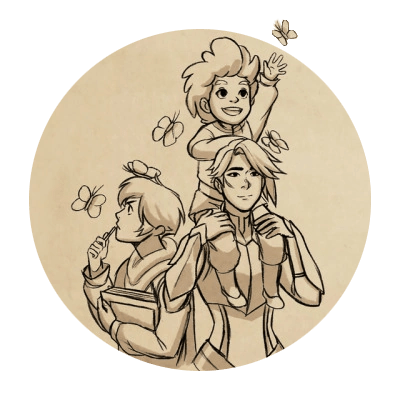In How To Be we’re going to look at a variety of characters from Not D&D and conceptualise how you might go about making a version of that character in the form of D&D that matters on this blog, D&D 4th Edition. Our guidelines are as follows:
- This is going to be a brief rundown of ways to make a character that ‘feels’ like the source character
- This isn’t meant to be comprehensive or authoritative but as a creative exercise
- While not every character can work immediately out of the box, the aim is to make sure they have a character ‘feel’ as soon as possible
- The character has to have the ‘feeling’ of the character by at least midway through Heroic
When building characters in 4th Edition it’s worth remembering that there are a lot of different ways to do the same basic thing. This isn’t going to be comprehensive, or even particularly fleshed out, and instead give you some places to start when you want to make something.
Another thing to remember is that 4e characters tend to be more about collected interactions of groups of things – it’s not that you get a build with specific rules about what you have to take, and when, and why, like you’re lockpicking your way through a design in the hopes of getting an overlap eventually. Character building is about packages, not programs, and we’ll talk about some packages and reference them going forwards.
She’s power, she’s grace, she’ll punch you in the face, she’s a queen, she’s a knight, she’s here to have a fight, she’s Amaya from The Dragon Prince!
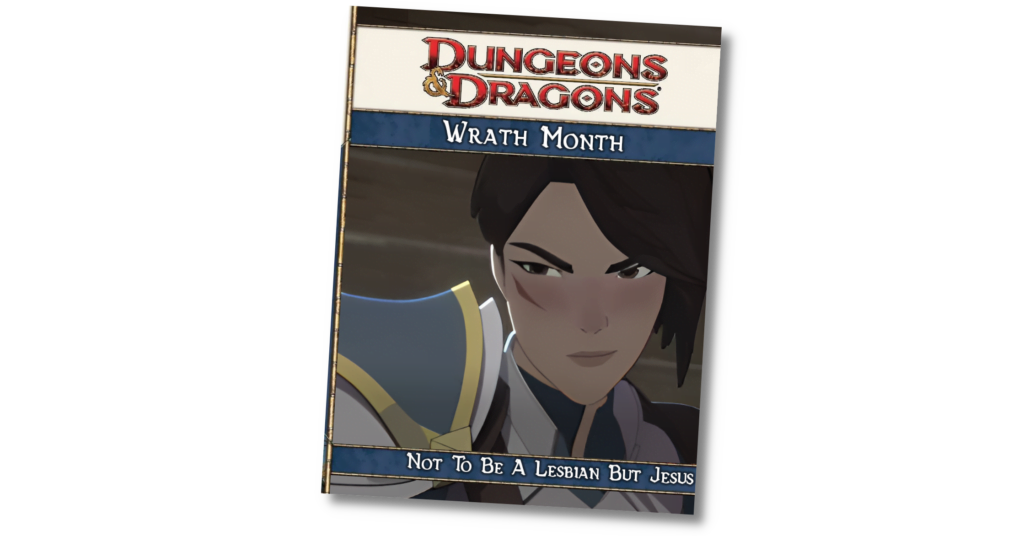
Now hold up, before we go any further, let’s discuss, real quick, what a character with a disability is like in D&D and how you should handle them. And then, before I go into on that let me be clear I am not talking to people with disabilities and how they should handle roleplaying their own characters. They know better than I do. What I want to talk about is how a player who doesn’t have any experience with a disability may approach a playing a character who lives with it, and how they ‘should’ handle it.
The ‘should’ is tricky, so let me simplify this for you: Disability is not transactional. You do not get bonuses for limiting your character in a particular way and you do not need mechanics to assert that limitation. The game rules indicate that a character can move through a space, navigate daily life and cope entirely with the space around them in a standardised way, and that any given character you play is capable of doing those things. This means if your character lacks a major sensory capacity or has a mobility limitation, even with that incorporated they can navigate life at the same standard as other characters. If your character has a base movement of 6, then that character in a wheelchair still has a base movement of 6. How? I don’t know, ask them, they’re clearly really good at using that wheelchair to get around!
Remember that your characters can already be taller or shorter or harder of hearing or shortsighted or longsighted and the game rules do not impose limitations on you because you have ‘more or less’ of a physical capacity. The game rules are for handling the function of game entities within a fictionalised space, and the fiction is an explanation for how those functions work. If your character has deafness, then that is part of the fiction, and it is merely a little bit less than a character who is hard of hearing. Use the fiction to tell the story, and look to the rules to resolve disputes, not to create that fiction.
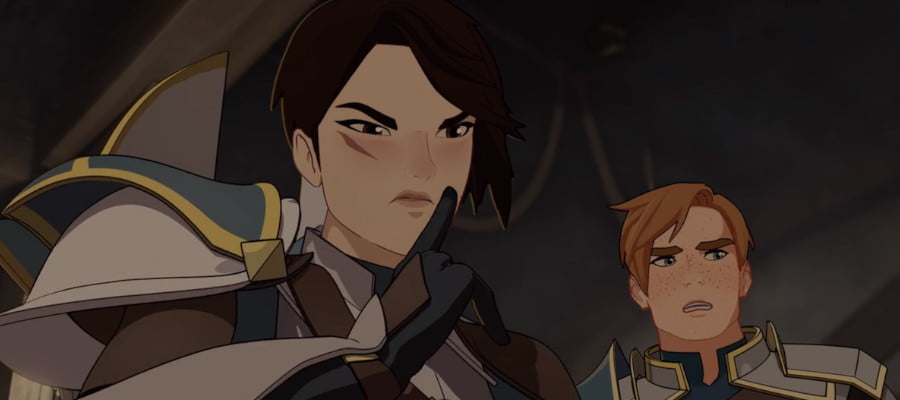
In this context, the disability is deafness. Amaya has deafness, and communicates primarily through a sign language (and violence). There are multiple characters who understand her and can communicate with her meaningfully. Your character who’s like Amaya probably can do the same, and then it’s just a matter of who around them knows the sign language. I think that a DM should strongly consider just making ‘sign’ versions of languages a freebie for player characters, because that’s cool and also it means you can represent people’s relationships to the sign language users in the setting by who chooses not to learn it. Ie, you get to signal who excludes the character with deafness rather than present the idea of including them as exceptional and noteworthy.
“Most people in the real world don’t speak sign,” sure and most people in the real world don’t have to wonder about fucking dragon attacks. It’s a game based on telling interesting stories, don’t be boring.
In the context of a D&D universe, there’s definitely something the story could use this for: It’s essentially introducing another, previously unconsidered axis of language to the game. I think that there’s a really interesting conversation to be had here, but I’ll tell ya this much: Every single shopkeeper in the goddamn world where your profit and loss exchanges can count into a year’s worth of funding are going to spend the time to learn some of this language.
I also want to note that I refer to Amaya as ‘having deafness’ rather than ‘being Deaf.’ Being Deaf, with a capital D, refers to a cohort of people who experience the disability and determine it as a distinct cultural group that they self-identify as being in. It’s not my place to call a character a member of that group if they haven’t told me that, and I haven’t asked Amaya. This is a conversation for Deaf people to have and for me to keep my face out of.

Examining Amaya
I fear this is going to be a little boring, honestly. Amaya is an example of an extremely standard, usefully clear character. We know she doesn’t do magic, we know she doesn’t have special abilities, but we also know she can hang with skill and grit at the level of the characters who do.
Amaya wears heavy armour and fights with a shield. Her fighting style can be destructive and mobile, pushing people around and shoving through things rather than sneaking around.
That’s kind of it, though! For all that she’s a character with a lot going on, in terms of ‘what she can do,’ you’re talking about a melee capable knightly type with heavy armour and a shield. That’s it, we have a very nicely defined, fairly tight box to work in, and what’s more, it’s a space the game system can express very easily.
Essentials
But don’t worry, we can still find something fun to play around with.
Glossary Note: Conventionally, the term used in D&D for this mechanical package is race. This is the typical term, and in most conversations about this game system, the term you’re going to wind up using is race. For backwards compatibility and searchability, I am including this passage here. The term I use for this player option is heritage.
Heritage, uh, basic, simple. Depending on how much you want your character to look like Amaya? You probably want to go with a Human. Something that gets a strength bonus. I’m sure that if you punched in ‘Amaya, But She’s A Hot Orc’ would get you a lot of good results on Tumblr. You’re not going to need the heritage to cover a mechanical demand of the character so the question becomes ‘what do you want her to look like?’ I know I wouldn’t pick a heritage that adds something magical to her – not an Eladrin or a Shifter, for example – because the character’s vibe is very importantly a tough lady who can fight. Heritage is therefore, a wild option. Amaya doesn’t look a lot like a Warforged, Minotaur, Dwarf or Dragonborn, but I bet you could interpret her very easily as a Mul.
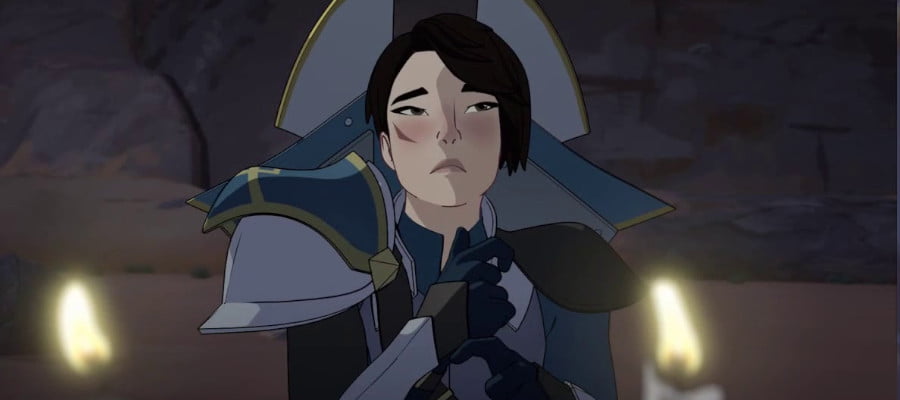
Anyway, about that shield.
As it stands, 4e D&D does not have a lot of space to handle a character who fights with a shield. Shields exist in the system, but they’re not the same kind of expandable, supported device as they were back in 3rd edition, in part because the more complicated that system gets, the more it gets in the way of doing other things. In later 3rd edition, it was not uncommon for everyone to have a levitating, floating shield hovering around them, even if they were a wizard because the actual piece of equipment was only limited by gold access.
In 4e D&D, shields are very different; there are three shields available to play with as categories, and they’re barbed, light, and heavy. These shields can be enchanted, but the armour bonus they provide is small and doesn’t constantly expand. Enchantments for them are much more about small categorical bonuses rather than scaling advancement. Think more like a wondrous item that gives you an armour bonus than a scaling piece of your armour set.
You can get an enchantment that makes your shield a kind of bad short sword. I don’t like it because it’s magical and it creates the impression that you can only fight with the shield because of magical abilities. Instead, I’d propose talking to your GM about this in very simple mechanical terms: You are mechanically, going to have a shield and wield a flail or hammer, but thematically, you are fighting with a shield and have your other hand free.
This is not an unreasonable ask; there are very few times when ‘but you have a hammer in your hand and a shield in the other’ are going to interfere with a scene. Imagine a scenario where someone throws something to your character and you need to catch it – if you were ‘really’ wielding a weapon and a shield, you could drop the weapon to catch the object, and then when you have the object, put it away and start wielding the weapon again. The weapon could be chained to your wrist for easy retrieval or it could be dropped on the floor, and either way the ‘readjusting to fight with it’ could be hand-waved away as needing a moment. There’s a lot of space for the thematics to hide the mechanics there. Your ‘invisible weapon’ takes time to get ready, because you need to (say) strap your shield in place and it limits your ability to get at things properly because you’re wearing heavy gauntlets, that kinda thing.
They are still separate items; you have to enchant your shield and your hammer separately. And you’ll want to make sure they’re kinda unobtrusive — as much as choices like Mark of Thunder and a thundering weapon would rock socks, you probably want them to feel as close as possible to mundane items.
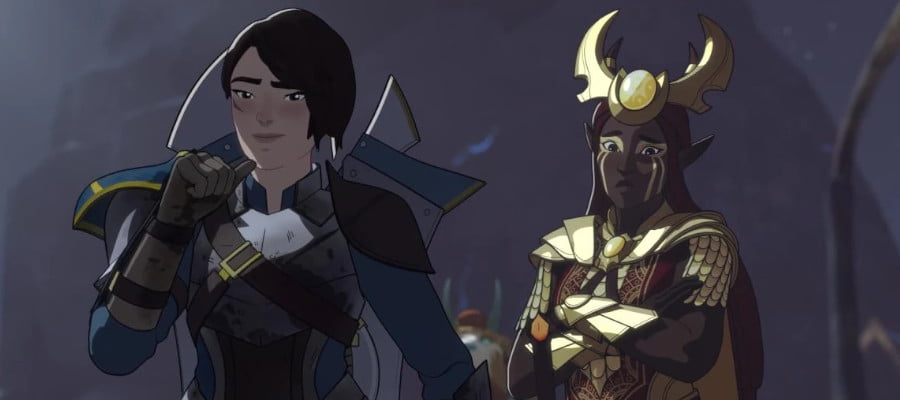
I think it’s hard to argue that Amaya isn’t a fighter. Maybe she’s a knight, maybe she’s a slayer (ew), whatever. But with the shield and her overall disposition, it’s hard to imagine an Amaya homage not being a defender who doesn’t use magic, and that gives you one nice, clear option, the baseline PHB fighter. This is good news though because the baseline fighter kicks ass.
Your build options then aren’t about what class or heritage to pick, but rather about how to build within that space, and I have three suggestions for you there. What weapon do you use to represent Amaya?
Grappling Fighter
Hey look at that, this one’s right out of the box! Ask the DM very politely if your ‘shield’ can actually be a hammer (because it’s a big blunt weapon) and keep your off-hand empty. This empty hand lets you use all the grappling techniques of the Brawler Fighter, and use the Brawler Style grappling fighter move to grab anyone who tries to get away from you. You don’t need to keep them there – let them spend time trying to wiggle away from you – but just take advantage of hitting them and stopping them moving for a turn.
Funnily enough, this build? Doesn’t get to take advantage of a shield. There are some weapons with the Defensive Property, which is similar, but they’re all double weapons, so no shield. We’ll get back to those anyway, he says, winking at the camera.
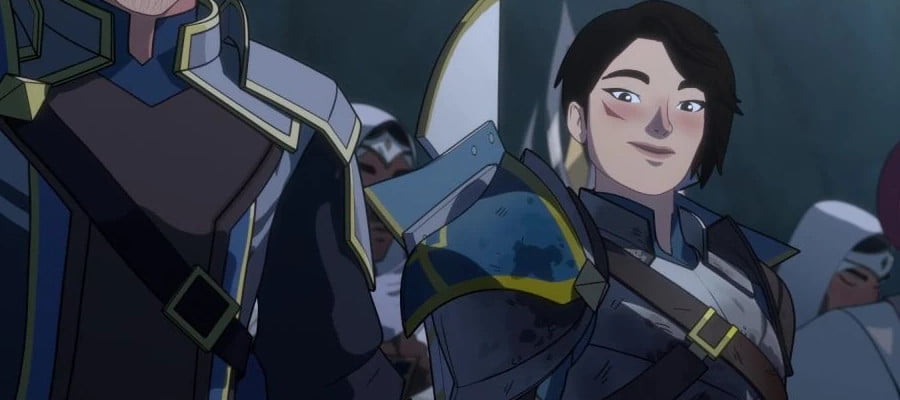
Hammer Handed
The Hammer is your easiest option for Amaya. The Hammer is a well-supported, powerful weapon that also works just fine without any support. It’s blunt damage so you don’t have to ask the question about how your fists are doing ‘slashing’ damage. You can invest a lot of feats in supporting a Hammer or you can invest almost no feats in it, and either way you’re going to wind up with a pretty cool weapon. You can get a brutal one-handed hammer in the Craghammer, or if you don’t want to spend a feat, the Warhammer. 1d10 is a lot of chunky damage!
This kind of build wants to focus on having a good AC; you have a shield, so you want to take advantage of it. The fighter has a lot of powers that are about pushing, so you probably want to build for that. This is a build that works right out of the gates and doesn’t take any time to mature, unlike the grappling fighter that can occasionally bite off more than it can chew by keeping everyone close to it at levels 1-2.
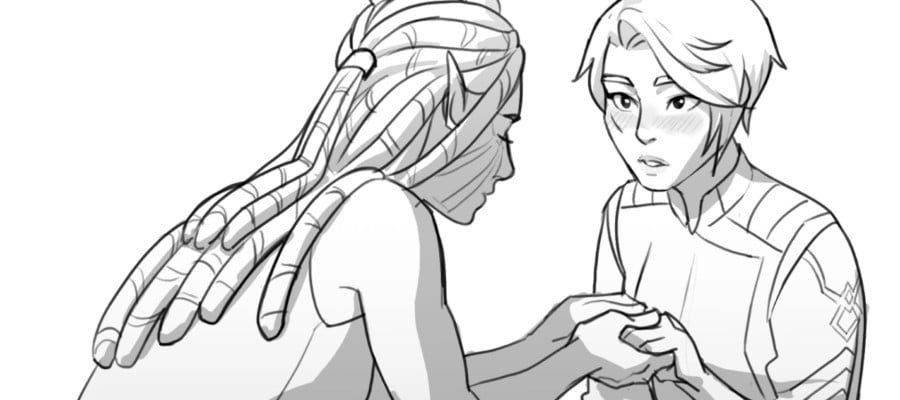
Ch-Ch-Chainges
And then we get to the flail, my beloved.
Flails give you control in terms of turning slides into knockdown if you want. If you wind up building in a way that adds slides to your attacks, you can turn that into a knockdown. This can make you very good at throwing people around a battlefield but also keeping them there when you’re done with the throw-around. At level 1 with flail expertise, if you’re using a flail, Footwork lure lets you shift a square away from an enemy, then leave them prone exactly 1 square away from you – meaning their turn has to be getting up and either getting past you (bad idea, you’re a fighter, and they’re marked) or attacking you. Except attacking you involves getting close and you’re too close to charge.
I love this, it’s such a great trick to be able to do at level 1, and I find when I play this kind of build I wind up looking at the battlefield like a scrabble board, wondering how I can cut it up with where I stand to ruin people’s days. And what’s more, it’s optional! You can shift right next to them and not away from them! You can just use the slide as a slide! And this is, again, level 1!
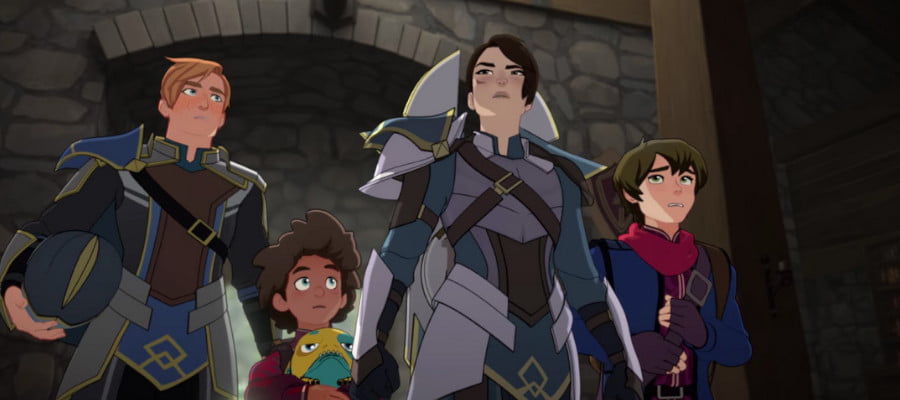
Junk Drawer
If you want to spend a feat on gussying up your flail and dispose of the ‘shield’ , the Kusari-Gama is a two-handed superior defensive flail with reach. I like this a lot for representing Amaya suddenly and abruptly reaching out to hit you – like step-step-SMACK – then back to her starting position, especially if you use that with slides. It creates the impression of a character who’s moving faster than ‘should be possible,’ even if it’s all working properly under the hood. Being defensive, it gives you a shield bonus, which I like a lot as a way to wed these ideas together.
Also you could go with a multiclass monk to get a melee fist attack, which means you fight just fine without your gear, which is important for some takes on the character. I personally don’t need it, but that’s cool too. If you’re aiming for an Amaya that doesn’t take centre stage as a tank, the Warlord and Ranger can fill in the same job, and I do kind of love the idea of a Warlord who expresses herself without all the shouting and bluster people normally demand of the Warlord conceptually. The Ranger could even wield the Kusari-Gama as a twin-striking weapon.
Conclusion
The language I used in this document to refer to Amaya and her deafness was informed in part by the United Nations document on inclusive language, and an Australian government form on the same thing. I spent some time reading Deafness Tumblr for similar opinions though none of that feels like it was very formally structured and was largely about people within the group talking to and about one another.
But hopefully you’ve noticed how little I needed that document here about deafness. Amaya is cool and capable and interesting and presents an interesting challenging without anyone needing to ad hoc how she relates to feeling a big painful pressure wave from a thunderstone rocking her body the same way it rocks anyone else’s body.
